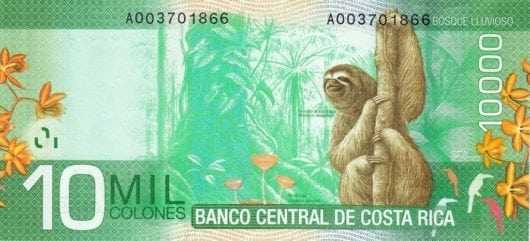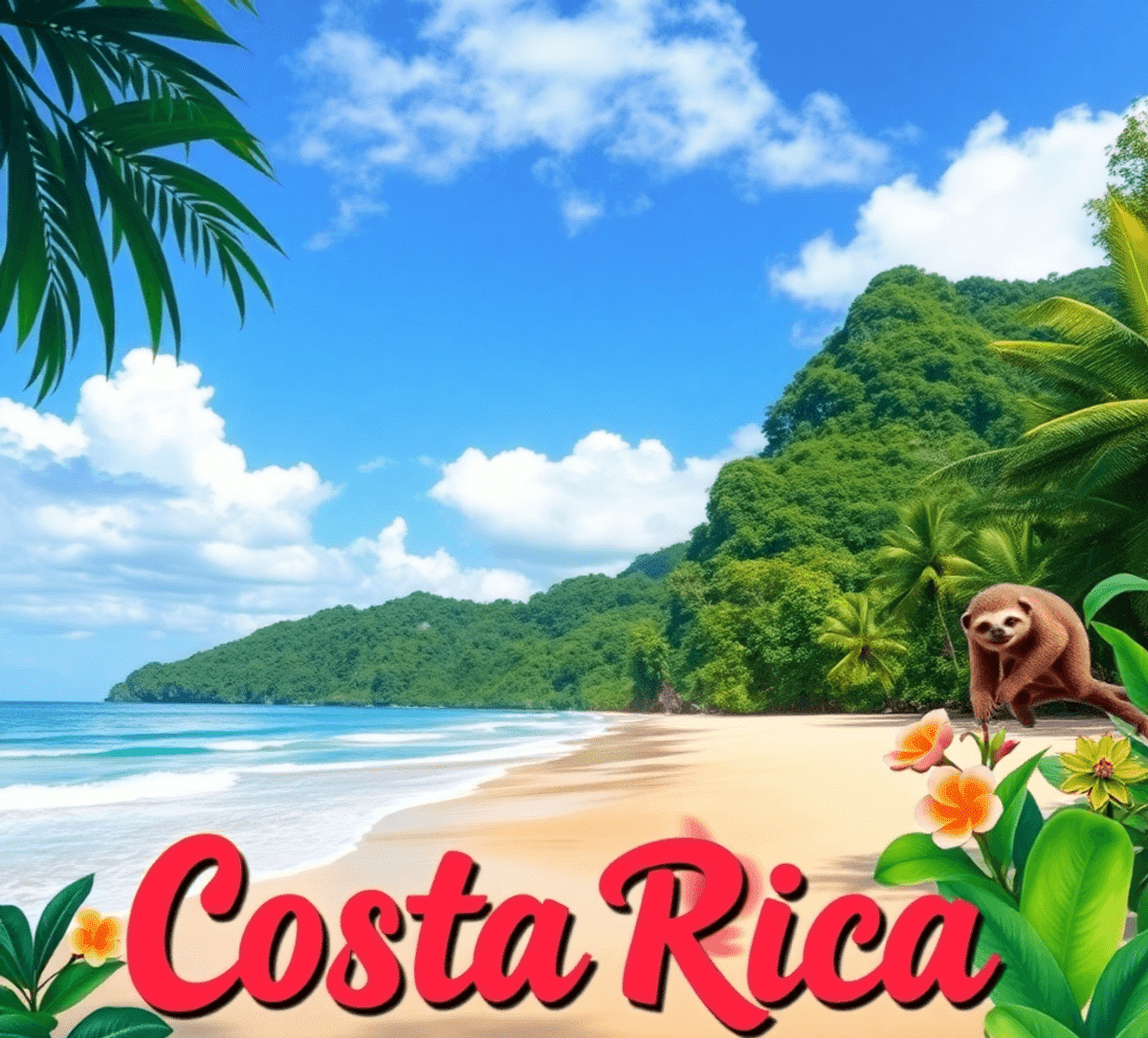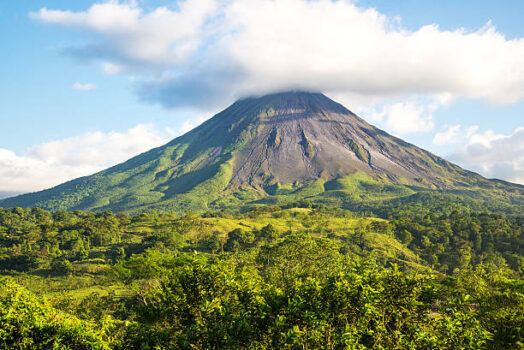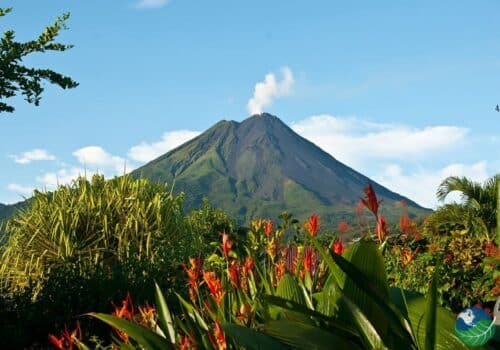Colones to Dollars
The official currency of Costa Rica is the Colon. Colones consist of colorful bills that depict some of Costa’s Rica’s most beautiful animals– these being sharks, monkeys, sloths and butterflies. They come in the amounts of 1000, 2000, 5,000, 10,000, 20,000 and 50,000 colones. The exchange rate between the dollar (USD) and the colon is always fluctuating and is currently around 612 colones to the dollar. For the most current exchange rates, check the site of the Central Bank of Costa Rica.
The Colon
The Costa Rica currency, the Colon, was named after Christopher Columbus, or Cristobal Colon. New colorful waterproof bank notes were released between 2012 and 2014. The bills come in denominations of ¢1,000, ¢2,000, ¢5,000, ¢10,000, and ¢20,000, ¢50,000 with coins of 5, 10, 25, 50, 100 and 500 Colones. You might also notice that the bills are different sizes. That is actually a unique feature that helps people who are blind differentiate between each bill.
The money system in Costa Rica is not too confusing, so you shouldn’t be too worried about trying to figure it out. A quick reference point is that everything is a multiple of five.
500 colones is equivalent to approximately one dollar. Make sure you check the exchange rate before your trip. The exchange rate may go up or down, but it won’t make that much difference in everyday purchases. 1,000 colones is about $2, 4,000 colones ~ $8, 5000 ~ $10. 10,000 colones ~ $20. A good trick is to look at the first number and double it to equal the approximate dollar amount.
Using US Cash
US dollars are widely accepted in Costa Rica. Bring smaller bills like $1, $5, $10 and $20 bills. The bills will need to be in good condition as they will not be accepted if they are ripped or torn. The larger the bill, the more perfect it needs to be. Bills larger than $20 are difficult and might have to be changed at a bank. You will most likely receive your change in the local currency: colones. Euros are not widely accepted in Costa Rica.
Exchanging US Dollars To Costa Rican Money
When you arrive, you may exchange your money for official currency at any local bank. Some upscale hotels will also exchange money for their guests. Note that you will get a more favorable exchange rate from banks. Do not exchange money inside the airport. You’ll see money changing kiosks as soon as you exit the baggage claim area, but it’s best to walk right past it. The exchange rate at the kiosks in the Costa Rica airports is notoriously terrible. You can also exchange money at your own bank in your home country for a good rate. They will just have to order the colones, so plan on exchanging your money a few weeks ahead of time.
Travel Tip: If you are making a smaller purchase at a local convenient store or soda, try not to pay with large colones bill. For example, if you want to buy a Casado for 2,500 colones, try not to us a 20,000 colones bill. Ticos tend to get annoyed because they don’t want to break that much change. Although if you are insistent, they will usually help you.
Travel Tip: Most places accept credit and debt cards. Just check with your bank about any possible fee you might have to pay to use your card internationally.
Travel Tip: Leave your travelers checks at home. They are not as widely accepted as cash or credit cards.
Travel Tip: Local banks in Costa Rica include the BCR (Bank of Costa Rica), BN (Banco Nacional) and BAC (a private bank).
Looking for more Costa Rica travel tips? Click here!
 |
The main color of the 1,000 colones banknote is red. On the reverse, you can see a dry forest with a Guanacaste tree, a white-tailed deer and a Costa Rican nightblooming cactus. The observe shows Braulio Carrillo Colina, who was the Head of State of Costa Rica between 1835-1837 and 1838-1842, as well as the 1840-1842 Costa Rican coat of arms. |
 |
The main color of the 2,000 colones banknote is blue. On the reverse, you can see a coral reef, a bull shark, a red cushion sea star and a slimy sea plume. The observe shows Mauro Fernández Acuña, who was a lawyer and politician, as well as the Colegio Superior de Señoritas. |
 |
The main color of the 5,000 colones banknote is yellow. On the reverse, you can see a mangrove swamp, a white-headed capuchin monkey, a mangrove crab and a red mangrove. The observe shows Alfredo González Flores, who served as President of Costa Rica from 1914 to 1917, as well as the Banco International de Costa Rica building in San José. |
 |
The main color of the 10,000 colones banknote is green. On the reverse, you can see a rainforest, a brown-throated sloth, a cup fungi and a eriopsis orchid. The observe shows José Figueres Ferrer, who served as President of Costa Rica on three occasions, as well as the Abolition of the Army. |
 |
The main color of the 20,000 colones banknote is orange. On the reverse, you can see Paramo, a volcano hummingbird, a sunflower and coffee plants. On the observe, you can see Carmen Lyra, the first prominent female Costa Rican writer, as well as an outline of Costa Rica and a rabbit stroking a wolf from Lyra’s “Cuentos De Mi Tía Panchita” (Tales of My Aunt Panchita). |
 |
The main color of the 50,000 colones banknote is violet. On the reverse, you can see a cloud forest, a parasol mushroom, a bromelia flower and a morpho butterfly. It shows Ricardo Jiménez Oreamuno, who served as president of Costa Rica three times and also served the Supreme Court in San José. |
ATM Machines
You may get local colones using your ATM card. It’s important that you know the exchange rate before you do this. You should check with your bank regarding their policy for foreign ATMs, fees, limitations, etc. Local ATM’s fees will vary, just like at home. Be mindful when using ATMs and make sure that you are in a safe area. Some ATMs will let you withdraw dollars, but not all of them.
Credit Cards
Credit cards are widely accepted by most businesses in Costa Rica. Contact your credit card providers to let them know you are traveling and ask them if any foreign transaction fees apply. Sometimes you will get a better price paying in cash rather than use a card, especially when you are negotiating.
Cost of Traveling in Costa Rica
Costa Rica is regularly voted as the happiest country on earth, based on its life expectancy, lifestyle, values, and its environmental sustainability. Every year more people come to visit this little country for its natural beauty and eco-friendly attitude. Those who travel on a shoestring budget can survive on $50 a day. Top-notch hotels can charge up to $500 or more. Prices of luxury hotels and tours are in dollars, and dollars are widely accepted, but it is useful to have some Colones on hand.
Shopping in Costa Rica
Shopping for clothes and food in Costa Rica is not as cheap as you might expect. Most prices are actually similar to prices in the US or UK. Clothes, in particular, are expensive in Costa Rica. Supermarkets now offer a wider selection of local and imported food and a good selection of wine. It is significantly more costly than in the US, especially for imported items. Shopping in the center of San Jose, like at the Central Market on Avenida Central, is cheaper than in the flashy Malls of the Suburbs, and this is also where you will find typical artisans and souvenirs. The most economical places to shop for fresh foods, meats, fish fruits, and vegetables are at outdoor ferias (farmer’s markets). They are usually open in the mornings on weekends. We suggest having a meal at a traditional soda too! Sodas are “mom and pop shops” that traditionally serve the famous Costa Rican casado, or “married man’s meal.” It’s served with chicken, fish, pork or beef, rice, beans, salad, plantains and fresh juice! Bring cash because it will be cheap!
Tipping in Costa Rica
Unfortunately, there is no definitive guide for Tipping in Costa Rica, and it’s a hard topic as people have different opinions on when and how much to tip. Tips are appreciated, and your guides and drivers will be used to receiving them from tourists.
Drivers & Guides:
Depending on how much time and effort each guide or driver spent with you, $10, $20 or $40 is certainly appreciated based on the level of service you feel you received.
Taxis:
Tipping taxi drivers are almost unheard of, but if you feel the urge, it will be well received!
Restaurants:
Leaving a tip is not required for servers. Restaurants in Costa Rica add a 10% service charge to your bill. If you receive exceptional service, we recommend leaving an additional 10%.
Hotels:
For porters, 500 colones (about $1) per bag is a fair gratuity.
Above all, we hope that you find this information useful and that you are getting excited about your upcoming trip to Costa Rica.
Check out some more facts about Costa Rica.












Follow Us